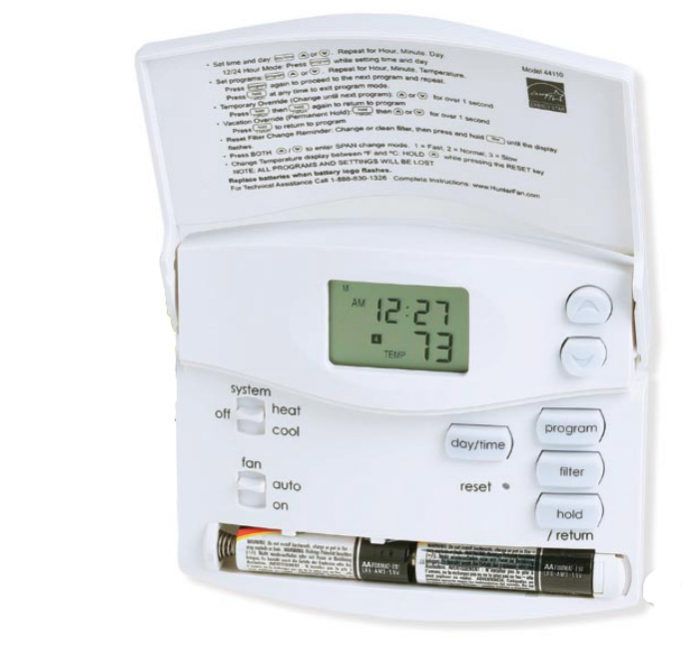Energy-Saving Thermostats
Easy to install, these programmable gizmos can save money and keep you comfortable.

Synopsis: Today’s high-tech thermostats can turn down the heat (or air conditioning) when you’re not home and turn it back on before you return. Here you’ll get an explanation of three grades of thermostat (good, better, best). You’ll also get some important advice about recycling your old mercury-switch thermostat.
It wasn’t too long ago that the most common method of cutting home-heating costs involved turning down the thermostat on the way to bed and again on the way out the door.
Today’s programmable thermostats can provide the same savings and ensure a comfortable temperature when you rise in the morning and when you come home from work at night. With prices beginning around $40, basic models can store different settings for weekdays and weekends. High-end models (priced $90 and up) can store a different program for each day of the week.
Minimize operating time to save money
Whether you adjust the thermostat manually or rely on a programmable thermostat, your savings result from the setback, or the reduction in temperature from the typical occupied setting. Studies by the U.S. Department of Energy have found that the energy required to raise the temperature of a house to its normal level approximately equals the energy saved as the temperature falls to the lower setting. The longer the setback, the more energy savings you enjoy.
The degree of savings you’ll see is greater in a milder climate than in a more severe one. However, the accepted rule of thumb is that for each degree of setback over an eight-hour period, you’ll reduce energy consumption by 1%. During the heating season, utility companies recommend that you set the thermostat at 68 ̊F during the morning and evening and reduce the temperature to 55 ̊F during the day and while you’re sleeping. Similarly, you can economize on cooling costs by raising the thermostat setting from 78 ̊F to 85 ̊F when you’re out or sleeping.
Check for compatibility
A new thermostat needs to be compatible with your home’s HVAC system, so know how many wires the system has. Homeowners with heat pumps and radiant-floor heat need to be especially careful with their selection. A temperature setback in heating mode can cause a heat pump to operate inefficiently and erase potential savings, so you need to choose a thermostat designed to work specifically with heat pumps. Because high-mass radiant floors are slow to lose and gain heat, temperature setbacks have to be timed differently.
When choosing a thermostat, pay only for the features that you’ll need. If you’re a creature of habit who rises in the morning and returns home at night at the same times every day, you’ll need less programming flexibility than someone who has a different schedule every day of the week. Finally, look for an Energy Star rating (www.energystar.gov) on the thermostat. This rating ensures that the thermostat is capable of four daily temperature settings and also is preprogrammed for efficient, energy-saving operation.
For photos and a breakdown of different thermostats, click the View PDF button below.
Fine Homebuilding Recommended Products
Fine Homebuilding receives a commission for items purchased through links on this site, including Amazon Associates and other affiliate advertising programs.

A House Needs to Breathe...Or Does It?: An Introduction to Building Science

Get Your House Right: Architectural Elements to Use & Avoid

The New Carbon Architecture: Building to Cool the Climate


























